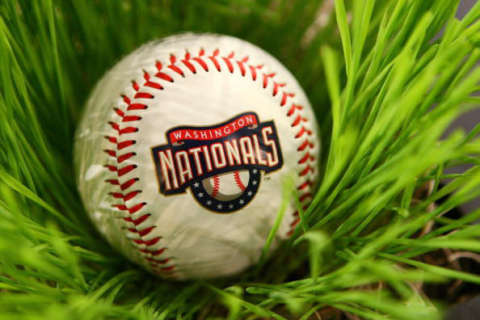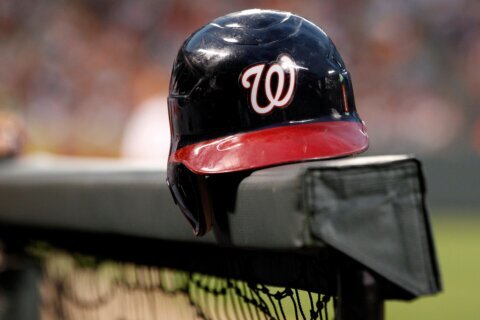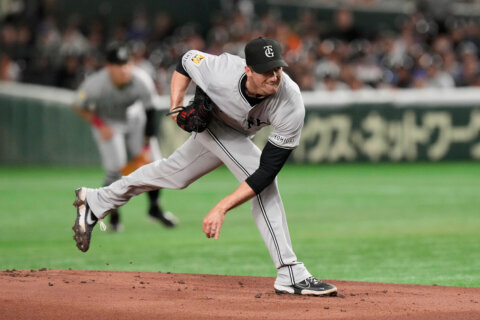5 questions Nats' Rizzo must answer once MLB lockout ends originally appeared on NBC Sports Washington
In a normal offseason, pitchers and catchers would be preparing to report to spring training next week. A majority of baseball’s biggest free agents would’ve already signed with new teams and conversation around the game would be focused on anticipation for the upcoming season.
However, this isn’t a normal offseason. Major League Baseball has been at a standstill since the owners locked out the players on Dec. 2. Neither side has been willing to budge on core economic issues, resulting in a tenuous negotiation process that has the start of spring training in jeopardy with Opening Day not far behind.
For Nationals President of Baseball Operations Mike Rizzo and the other 29 GMS across the sport, the labor negotiations have forced front offices to stand pat until a new Collective Bargaining Agreement is reached. When the lockout does end, Rizzo will have to act quickly in order to put the finishing touches on the Nationals’ roster before the 2022 season begins.
Here are the five biggest questions he will have to answer on the other side of this work stoppage.
1. How healthy are Stephen Strasburg and Will Harris?
The first order of business for the Nationals post-lockout will be touching base with the players they’ve been forbidden to communicate with these last couple of months. Perhaps most importantly, the Nationals will check in with pitchers Stephen Strasburg and Will Harris, both of whom underwent season-ending thoracic outlet surgery last year.
Injured players haven’t been allowed to use team facilities for their rehab during the lockout, forcing players such as Strasburg and Harris to look elsewhere for trainers to work with. The Athletic’s Ken Rosenthal reported in January that teams’ medical staffs are still permitted to contact outside trainers working with their players, so the Nationals aren’t completely in the dark.
Yet the health of both Strasburg and Harris will be critical for the Nationals in 2022. Strasburg has made just seven starts in the two years since he signed his $245 million extension. Washington would be thrilled to get some semblance of a full season out of him this year. Harris, who’s entering the final year of his contract, is currently the team’s lone veteran arm in the back-end of their bullpen.
2. What’s the plan for left field?
The state of the Nationals’ starting left field spot is the same as it was when last season ended. Trade acquisition Lane Thomas and 34-year-old Yadiel Hernández are the top in-house candidates to claim the job, though Thomas could shift over to center field should the Nationals decide this spring that Victor Robles isn’t an everyday player anymore.
Thomas impressed down the stretch last season with an .853 OPS in 45 games for the Nationals after he had a lifetime .625 OPS in 84 games for the St. Louis Cardinals. Forty-five games aren’t enough for a substantial sample size to make any grand declarations about his future, so the Nationals will have to assess how Thomas performs in spring training before determining his role. Hernández showed he can swing the bat as a seasoned rookie in 2021, but his shaky defense makes him a better fit at DH.
The Nationals can either look to free agency for an outfielder (more on that in a minute) or use the open spot to try and see what they have in Thomas and some other young players. Donovan Casey, acquired in the Max Scherzer/Trea Turner deal, will have a chance to play with the big leaguers in Florida after he was added to the 40-man roster this offseason. Casey is a dark horse to make the Nationals’ roster out of spring training even after the Nationals tendered Andrew Stevenson a contract.
Former top international signee Yasel Antuna is also on the 40-man; he’s switching from infield to outfield this year but will likely return the minors for at least the first few months as he tries to bounce back from a rough 2021 campaign and adjust to the new position.
3. Who fills their last two roster spots?
As their 40-man currently stands, the Nationals have 38 players on their roster. The only major-league free agents they’ve signed to this point are infielders Alcides Escobar and César Hernández, both of whom joined on one-year deals. Washington is expected to be in the market for players of that same ilk, perhaps targeting players who could turn into trade chips at the deadline this summer.
One of those roster spots could go to Ryan Zimmerman, who as of November hadn’t decided whether he was going to return for his 17th season. If he decides he wants to play in 2022, the Nationals will find a way to make room for him. But as far as roster needs go, Washington should be looking to add an extra veteran arm to both their rotation and bullpen.
The Nationals did reportedly show some early interest in the starting pitcher market. It wouldn’t hurt to add a veteran starter that can eat some innings as they navigate the health situations of Strasburg and Joe Ross, attempt to get Patrick Corbin back to form and get a good look at Josiah Gray in his first full major-league season. They could also use some help in the bullpen to take some pressure off their younger relievers and provide insurance in case Harris isn’t the same.
If the Nationals want to make a splash, the place to do it is probably in left field. The top remaining left fielders in free agency include Kris Bryant, Nick Castellanos, Michael Conforto, Kyle Schwarber, Joc Pederson, Eddie Rosario and Jorge Soler. Star Japanese outfielder Seiya Suzuki is also looking to sign with an MLB club after dominating Nippon Professional Baseball and being posted this offseason.
4. Is Juan Soto willing to talk about an extension?
The single most important question for the Nationals’ franchise is whether they’re going to be able to sign Juan Soto to an extension before he hits free agency following the 2024 season. Soto’s agent Scott Boras told reporters at the GM Meetings in November that the 23-year-old wants to know the Nationals are serious about competing annually before he sits down to talk about an extension.
Since those comments, the Nationals haven’t done much to indicate when they’re planning to contend for the playoffs again. They may not make any moves this winter that pushes the needle in that direction, opting rather to use 2022 as a try-out year for their top prospects to see which players they can build around in 2023 and beyond.
Even so, the Nationals would be remiss to not approach Soto’s camp this spring about working out an extension. It’s clear Boras is seeking top dollar for his All-Star client, who along with Freddie Freeman are the only players to finish in the top five of MVP voting each of the last three years. If Nationals ownership is willing to set contract records, they may be able to convince Soto to forego free agency.
5. How will the team approach Josh Bell’s future?
Besides Soto and maybe catcher Keibert Ruiz, the only position player assured a spot in the Nationals’ lineup this season is first baseman Josh Bell. After acquiring him in a trade with the Pittsburgh Pirates last winter, Bell overcame a slow start to post an .823 OPS with 27 home runs while showing some improvements at first base as well.
Bell is important to the Nationals for several reasons, chief among them his spot behind Soto in the batting order. Washington won’t have much lineup protection for Soto in 2022 and Bell will have ample chances to drive him in given Soto’s propensity for drawing walks. He only has one year left on his contract, however, and could be a trade candidate if he carries over his offensive success.
For a Nationals team lacking in offensive weapons, Bell should also be considered a candidate to sign an extension if the price is right. Washington doesn’t have many internal options at first base beyond Bell; perhaps the best candidate to replace him in 2023 is catcher Riley Adams. Bell is still only 29 years old and extending him could help show Soto that the Nationals are trying to build around him.







